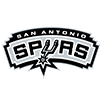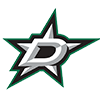Circling the Bases: What's Wrong with Verlander?
Justin Verlander threw 200 innings for the first time in 2007. Since that season, here are his rankings in total pitches thrown per season among all hurlers.
2007: 3,355 pitches, 21st in baseball
2008: 3,528 pitches, 8th in baseball
2009: 3,931 pitches, 1st in baseball
2010: 3,744 pitches, 2nd in baseball
2011: 3,941 pitches, 1st in baseball
2012: 3,768 pitches, 1st in baseball
From 2007-12 Verlander threw a total of 1,356.1 innings (let's not forget that the last two years that Verlander has thrown an additional 48.2 innings in the playoffs). Only one pitcher in baseball has thrown more innings the past six years – CC Sabathia (1,399) who is also having some issues this season. Coincidence? Perhaps, but the #3 man on the innings pitched tree the past six years is none other than Roy Halladay (1,351).
Face it, everyone's arm only has a certain amount of bullets in it. Are we to that point with Verlander?
The first point that says such a position is foolish is the K-rate of Verlander. His 10.21 per nine mark would be the best of his career and is more than a batter above his previous three year average. However, there is a troubling fact associated with the strikeouts, and that is his mph mark. Verlander's heater is two mph down from his career rate, you know, the same velocity decrease that Tim Lincecum is suffering from that has the world panicked. Why is no
Circling the Bases: What's Wrong with Verlander?
Justin Verlander threw 200 innings for the first time in 2007. Since that season, here are his rankings in total pitches thrown per season among all hurlers.
2007: 3,355 pitches, 21st in baseball
2008: 3,528 pitches, 8th in baseball
2009: 3,931 pitches, 1st in baseball
2010: 3,744 pitches, 2nd in baseball
2011: 3,941 pitches, 1st in baseball
2012: 3,768 pitches, 1st in baseball
From 2007-12 Verlander threw a total of 1,356.1 innings (let's not forget that the last two years that Verlander has thrown an additional 48.2 innings in the playoffs). Only one pitcher in baseball has thrown more innings the past six years – CC Sabathia (1,399) who is also having some issues this season. Coincidence? Perhaps, but the #3 man on the innings pitched tree the past six years is none other than Roy Halladay (1,351).
Face it, everyone's arm only has a certain amount of bullets in it. Are we to that point with Verlander?
The first point that says such a position is foolish is the K-rate of Verlander. His 10.21 per nine mark would be the best of his career and is more than a batter above his previous three year average. However, there is a troubling fact associated with the strikeouts, and that is his mph mark. Verlander's heater is two mph down from his career rate, you know, the same velocity decrease that Tim Lincecum is suffering from that has the world panicked. Why is no one talking about Verlander's loss of heat? For the record, Lincecum has 89 Ks in 89.2 innings this season.
More troubling to me than the loss of a couple of miles per hour on his fastball is the explosion in Verlander's walk rate. For his career Verlander has a 2.75 BB/9 mark, and in three of the past four years the mark has been under 2.30. Moreover, the last time that he walked more than the 3.25 batters he's issuing free passes to per nine innings this season was in 2008 (his 3.90 mark that year was the only time he's issues more than three walks per nine in a season of 180 innings pitched). Why the increase in walks? Perhaps the loss of velocity is part of it. Second, his 31.3 percent swing rate on pitches outside the strike zone is a four year low. Are batters laying off his second pitches more cause of the loss of velocity on the fastball? Oddly, he's getting ahead of batters more than ever before as his 63.3 first pitch strike rate would be a career best, so the increased walk rate may simply be a reflection of an inability to effectively locate his pitches as he gets deeper into counts.
Back to the point I started with at the top – his workload. Let's take a look at his pitch total per inning pitched from the last six years and compare it to this season.
2007: 16.6
2008: 17.6
2009: 16.4
2010: 16.7
2011: 15.7
2012: 15.8
2013: 17.7
Only once in the previous six years has Verlander topped 17 pitches an inning, and his current mark is two full pitches an inning over his mark the past two years. That doesn't sound like much, but think of it this way.
Seven innings in a game for a starting pitcher.
Two pitches extra an inning.
That's 14 extra pitches a game.
Give a guy 32 starts times 14 extra pitches a game.
You end up with 448 extra pitches.
If you posit 112 pitches a game as ideal, that means a 32 start pitcher has actually thrown 36 games – an extra four outings. That's a significant increase is it not?
All those extra pitches are taking a toll on Verlander's ability to go deep into games. In each of his last two outings he's been out there for five innings, and five times in his last eight outings he's failed to record more than 15 outs. That's Ted Lilly like, not ace-like. That inability to go deep into games costs Justin the chance to rack up wins though he's still on pace for 16 victories this season (though that would be a five year low). Here are his innings pitched per start the past six years and this season to help illustrate his inability to work deep into games.
2007: 6.30
2008: 6.09
2009: 6.86
2010: 6.80
2011: 7.38
2012: 7.22
2013: 6.06
Again, a seven year low.
Sometimes it's really as simple as balls and strikes with a fella. Simply put, with the extra strikeouts an extra walks this season Verlander is throwing too many pitches. Period. He needs to rectify that. In truth, he would benefit from pitching more for the ground ball and less for the strikeout.
To close on Verlander, some other facts.
(1) His 1.22 GB/FB ratio would actually be his best mark in a full season. He owns a career rate of 1.03.
(2) His 23.2 percent line drive rate would be a career worst. He owns a career mark of 20.1 percent. Before you expect a significant pull back here though it should be noted that his mark last season was 22.2 percent, well above his career rate.
(3) Verlander has a .347 BABIP mark. While that mark can vacillate from year to year based on random fluctuation, it's highly unlikely that he will finish the season with a mark remotely approaching this mark. For his career Verlander owns a .287 mark. In each of the past three seasons his BABIP mark has been below .287. He's never had a full season with a mark over .319 (that was back in 2009).
(4) His 7.4 percent HR/F ratio would be a three year low, but it's right in line with expectations given his 7.9 percent career mark.
(5) His 3.29 xFIP mark is two hundredths below his 3.31 mark from last season an it's well below his 3.70 career mark.
In the end Verlander has still been a very good pitcher. There have been some bumps in the road, and his current owners cannot be pleased with a 3.90 ERA and 1.38 WHIP, but there is some light at the end of the tunnel. If Verlander's BABIP comes down, and he's more economical with his pitches, then there is a very good chance his ratios will improve as the innings pile up this season.
BY THE NUMBERS
.404: The BABIP mark of Jhonny Peralta, the highest mark in baseball. Not only has no batter posted a BABIP of .400 since Jose Hernandez was at .404 in 2002, but Peralta has never finished a season with a mark of .350. He's the owner of a career .315 mark by the by. Pretty sure we'll see some regression as the .268 hitter is unlikely to hit .324 all year long.
1.52: The K/BB ratio of Carlos Marmol this season, one of the reasons he was designated for assignment by the Cubs. He's still missing bats, his 10.41 K/9 rate is impressive even if it's a seven year low, but he's walked 6.83 batters per nine innings continuing his maddening trend of not throwing strikes. The biggest problem, saying something given the walks, is the home run ball. After allowing two, one, five and four homers the past four seasons Marmol has already allowed six big flies this season.
2.01: The NL leading ERA of Jeff Locke. The Pirates hurler has a below league average K-rate (6.35), an above average BB/9 rate (3.93) an a league average 20.4 percent line drive rate. So how does he have a 2.01 ERA? His 54 percent ground ball rate is impressive, but other than that you should see the regression monster lurking, and he's close as Locke has a 0.50 HR/9 mark, a .203 batting average against, a .231 BABIP an a 86 percent strand rate.
4: The number of blown saves that Jonathan Papelbon has in his last five outings. Papelbon blew four saves last season and three in 2011. In those two campaigns he saved 38 and 31 games.
4: The number of players who have a .500 OBP the past 14 days. They are: Miguel Cabrera (.554), Jason Kipnis (.545), Austin Jackson (.537) and Ryan Howard (.509). The fifth man in baseball, and I could literally give you 93 guesses and you wouldn't come up with the name, is Wellington Castillo (.463).
5.81: The ERA of R.A. Dickey over his last five outings tied for the second worst ERA in baseball the past 30 days. He's tied with Scott Diamond and the duo is behind the 5.97 mark of the Marlins' Tom Koehler. On the flip side we have Joe Saunders who, inexplicably, has a 1.82 ERA the past 30 days, the fifth best mark in the game (Locke leads the way at 1.17).
8: The number of fellas who have an OPS of 1.000 at home this season. They are: Troy Tulowitzki (1.114), Miguel Cabrera (1.111), Chris Davis (1.074), Nate Schierholtz (1.054), Carlos Gomez (1.021), Jose Bautista (1.008), Shin-Soo Choo and Ryan Howard (1.002).
Ray Flowers can be heard daily on Sirius/XM Radio on The Fantasy Drive on Sirius 210 and XM 87, Monday through Friday at 5 PM EDT. Ray's analysis can be found at BaseballGuys.com and his minute to minute musings can be located at the BaseballGuys' Twitter account.






































